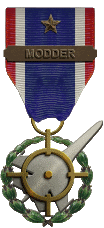-
Content count
2,076 -
Joined
-
Last visited
-
Days Won
28
dtmdragon last won the day on July 18 2024
dtmdragon had the most liked content!
Community Reputation
2,838 +1000 Reputation
About dtmdragon

Profile Information
-
Gender
Male
-
Location
Papamoa NEW ZEALAND
-
Interests
Flying
History
Military history
Flight sims
Beach life
-

What If Screenshot Thread.......
dtmdragon replied to Dave's topic in Thirdwire: Strike Fighters 2 Series - Screen Shots
USN trial aircraft camouflage during the Vietnam War applied to the F-8 -

Strike Fighters 2 Screenshots Thread
dtmdragon replied to Wrench's topic in Thirdwire: Strike Fighters 2 Series - Screen Shots
'Shake rattle and roll,' "Beep Beep!" -

F-4 EX?
dtmdragon replied to rlwicker1967's topic in Thirdwire: Strike Fighters 2 Series - General Discussion
F/A-18 Hornet production and procurement was the concern at the time -
Great news, keep fighting the good fight!
-

Guys do u think the Su-27 can make a difference in any air force ?
dtmdragon replied to 3bbod_4's topic in Air Combat School
Since the invasion in 2022 I have kept a 'sand box' separate SF2 install covering Russia and the Ukraine. I keep it updated as more information becomes available and new weapons are introduced to the conflict. I re-researched and updated the information for radar and weapon performance etc. Where a key aircraft or weapon system wasn't avalible here at CA I created an accurate stand it. I made sure jamming was functional and scaled correctly with radar strength across the diffrent aircraft, missiles and SAMs. It's not perfect but it's an accurate representation within the limits of the SF2 game engine (our modders abilities to improve it), and available accurate information on the weapon systems. It has a few custom campaigns that follow the current order of battle information at that time. How does the Ukrainian SU-27 fair in this 'sand box'? Not very well at all. The age of it radar, limited range of its AA-10 and lack of jamming ECM leave it particularly vulnerable. Especially once the AA-12 is in wide spread Russian service. That said using low level treetop height tactics to get close can help but any fight at medium altitude is dominated by the later generation Russian fighter, missiles and SAMs -

SF2 not well optimized for newer systems?
dtmdragon replied to JamesWilson's topic in Thirdwire: Strike Fighters 2 Series - General Discussion
Correct- 12 replies
-
- 1
-

-
- settings
- optimization
- (and 15 more)
-

SF2 not well optimized for newer systems?
dtmdragon replied to JamesWilson's topic in Thirdwire: Strike Fighters 2 Series - General Discussion
In my experience texture size has helped optimize fps and running out of memory. As beautiful as 2k and 4K textures are 1536x1536 for aircraft and terrain textures seems to be the sweet spot. As is 768x768 for ordinance, pilots and ground objects. If you are playing campaigns in standalone installs like ODS, Vietnam Air and Ground War Expansion etc that have a lot of aircraft and ordinance in the air at one time this really seems to make a difference.- 12 replies
-
- 6
-

-

-
- settings
- optimization
- (and 15 more)
-

F-4E DSCG Radar Display & DMAS / ARN-101
dtmdragon replied to ravenclaw_007's topic in Thirdwire: Strike Fighters 2 Series - General Discussion
Radar looks good, my vote is keep the CCIP as it was a serious tactical improvement for the Phantoms upgraded with it. Other than the gun sight not 'waiting' for you at the bottom of the HUD for you to fly the correct dive angle it is functioning exactly as it did in real life. So it's far more accurate than just a stationary depressed gunsight for bombing. -

SF2 Avionics Community Pack - - Beta release v0.4
dtmdragon replied to Eagle114th's topic in Thirdwire: Strike Fighters 2 Series - Mods & Skinning Discussion
It is a far more advanced sighting system than I realized with the wings serving as steering cues among other things depending on the mode etc. It's a shame SF2 can't replicate these kind of avionics -

SF2 Avionics Community Pack - - Beta release v0.4
dtmdragon replied to Eagle114th's topic in Thirdwire: Strike Fighters 2 Series - Mods & Skinning Discussion
No horizon line that I can tell either: Nesher: Israeli Mirage III: RAAF mirage: -

SF2 Avionics Community Pack - - Beta release v0.4
dtmdragon replied to Eagle114th's topic in Thirdwire: Strike Fighters 2 Series - Mods & Skinning Discussion
Have a look at this for the Mirage TW has it wrong -

F-4E Kurnass pack WIP
dtmdragon replied to dtmdragon's topic in Thirdwire: Strike Fighters 2 Series - Mods & Skinning Discussion
With regards to the design of the Israeli bomb: "It is widely assumed that the design of early Israeli nuclear weapons was strongly influenced by the second generation of French-made tactical nuclear weapons – especially the AN-52 nuclear bomb (first tested on 28 August 1972), roughly equivalent to such US-made tactical nuclear weapons as the Mark 7, Mark 8, Mark 11 and Mark 12" And with regards to Israel not wanting to show thier hand as a nuclear power, they did exactly that during the 1973 war: "Israeli then introduced what even the historians of the National Security Archives in Washington refer to as ‘an element of nuclear blackmail’..... .....Shalheveth Freier, the ministerial forum decided to ‘arm and target the nuclear arsenal in the event of total collapse’, or at least a ‘nuclear demonstration’, but also to ‘inform Washington of its unprecedented action’ – and then demand initiation of an ‘emergency airlift to supply Israel..... .....Correspondingly, several MD.620s of No. 150 Squadron were pulled out of their shelters and armed with nuclear warheads, while nuclear bombs were loaded on six modified F-4Es at Tel Nov AB, ‘at least to influence Washington’..... .....Whether it was Kissinger’s agreement – or ‘promise’ – to resupply Israeli stocks of aircraft, tanks and ammunition, or something else that eventually prompted the Israelis to de-activate their Jerichos, remains unclear." 1973-the-first-nuclear-war-crucial-air-battles-of-the-october-1973-arab-israeli-war-9781914377389_compress.pdf Also from another research report about the bombs design: "A. Warhead Type and Fissile Material There is a strong consensus among analysts and in declassified intelligence documents that Israel's early nuclear weapons, including those readied during the 1973 Yom Kippur War, were plutonium-based implosion-type fission devices. The fissile plutonium (weapons-grade Pu-239) was produced at the IRR-2 heavy water reactor and chemically separated from irradiated fuel elements at the associated reprocessing facility, both located at the Negev Nuclear Research Center near Dimona. The extensive French assistance provided to Israel for the Dimona reactor, heavy water supply, and critical plutonium separation technology was indispensable. Early French nuclear weapons, such as the AN-11 and AN-22 gravity bombs developed in the 1960s, were themselves plutonium-based implosion devices. Given the depth, sensitivity, and clandestine nature of this Franco-Israeli nuclear cooperation, it is highly probable that French technical expertise and design philosophies for plutonium implosion weapons were influential, if not directly shared, during the development of Israel's first generation of nuclear devices. This suggests a potential lineage for early Israeli bomb design that may reflect French technological approaches of that era, adapted to Israel's specific requirements and indigenous capabilities, rather than solely drawing parallels to early U.S. devices like the Fat Man." I researched the absolute s#*t out of this before I was satisfied enough to include a nominal Israeli nuclear bomb based on the AN-52 in this pack. I am satisfied that it is more probably than not that this is how the bomb was designed (with French influence/ assistance) and looked (influenced if not based on the AN-52). The existence, warhead type and yield is beyond doubt. As is the placing of nuclear armed aircraft on alert to 'persuade' the American's to help and 'just in case' after the failed Israeli counterattack in the Sinai. This pack is not a 'what if' and is as factual as possible. P.S. I absolutely love Tom Clancy books, games and movies but sorry Tom there's no way the Skyhawk carried Israel's nuclear bombs, it was the Mirage first and then the Phantom 😁 -

F-4E Kurnass pack WIP
dtmdragon replied to dtmdragon's topic in Thirdwire: Strike Fighters 2 Series - Mods & Skinning Discussion
F-4E Kurnass Israeli Airforce pack 3.3 uploaded and awaiting approval. 3.3: - AN/AXQ-14 (IDF) and AN/AWW-9 added. Appropriate loadouts and campaigns adjusted accordingly. - Missing GBU-15 added. - F-4E Kurnass now split into F-4E Kurnass and F-4E Kurnass (69) to better reflect the difference between the AN/APS-107 and the AN/APR-36 RWR in the first two batches delivered in 1969. - Nominal Israeli 20kt early nuclear bombs and effects added. Based on author and historian Tom Coopers research. -

F-4E Kurnass pack WIP
dtmdragon replied to dtmdragon's topic in Thirdwire: Strike Fighters 2 Series - Mods & Skinning Discussion
Hey mate, I'm still keen on checking out that image if it might shed some more light thanks mate @RustyKurnass -

Strike Fighters 2 Screenshots Thread
dtmdragon replied to Wrench's topic in Thirdwire: Strike Fighters 2 Series - Screen Shots
F-4E Kurnass Israeli Airforce pack updated to 3.3 (Uploaded and awaiting approval )












